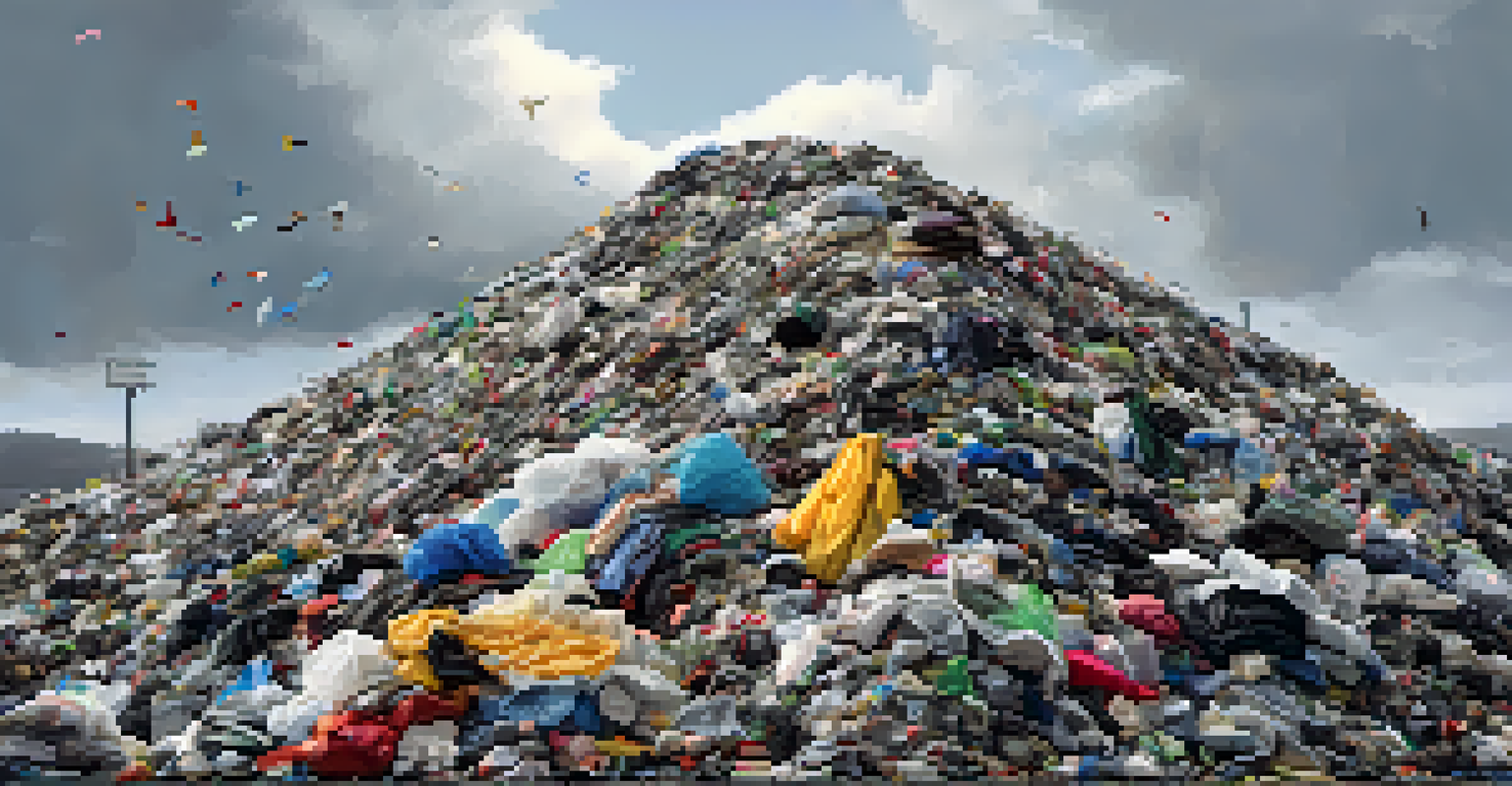The Environmental Footprint of Fast Fashion: A Deep Dive

Understanding Fast Fashion and Its Appeal
Fast fashion refers to the rapid production of inexpensive clothing to meet the latest trends. Brands churn out new styles at breakneck speed, making it easy for consumers to buy fresh outfits without breaking the bank. This constant turnover plays into our desire for novelty and self-expression, but it comes at a significant cost to the environment.
Fashion is the armor to survive the reality of everyday life.
The allure of fast fashion lies in its affordability and accessibility. With countless options available online and in-store, shoppers can easily refresh their wardrobe for a fraction of the price of sustainable alternatives. However, this convenience often overshadows the hidden environmental consequences tied to these seemingly harmless purchases.
As we dive deeper into the world of fast fashion, it's essential to recognize how our choices impact the planet. By understanding the industry's mechanics, we can make more informed decisions about our clothing consumption and its broader implications.
The Production Process: A Resource Drain
The journey of a fast fashion garment begins with raw materials, often sourced from water-intensive crops like cotton. This process not only depletes local water supplies but also contributes to pollution through the use of pesticides and fertilizers. As a result, the environmental toll starts before the clothes even hit the shelves.

Once produced, these garments undergo a manufacturing process that generates significant waste. Factories often prioritize speed over sustainability, leading to excessive energy consumption and the release of harmful chemicals into the air and water. This disregard for environmental standards further compounds the industry's footprint.
Fast Fashion's Environmental Impact
The rapid production and consumption of fast fashion significantly harm the environment, contributing to pollution, waste, and resource depletion.
The rapid production cycle is a race against time, but who truly bears the consequences? Often, it's marginalized communities and ecosystems that face the brunt of this environmentally damaging process, raising critical ethical questions about our clothing choices.
Transportation: A Global Footprint
After production, fast fashion garments are typically shipped around the world, adding another layer to their environmental impact. The transportation sector is a major contributor to greenhouse gas emissions, and the frequent shipping of clothing exacerbates this issue. Each trip contributes to climate change, further questioning the sustainability of our fashion habits.
The greatest danger for most of us is not that our aim is too high and we miss it, but that it is too low and we reach it.
Moreover, the global nature of fast fashion means that companies often rely on fossil fuels for transportation, which can lead to oil spills and other ecological disasters. These incidents not only harm marine life but also disrupt local economies dependent on healthy ecosystems.
As consumers, we may not see the direct connection between our shopping habits and the planet's health, but every purchase has a carbon footprint. Understanding this connection can empower us to seek out more sustainable options and demand change from the industry.
Waste: The Hidden Cost of Cheap Fashion
One of the most alarming aspects of fast fashion is the sheer volume of waste it generates. The average consumer now buys 60% more clothing than they did 15 years ago but keeps each piece for half as long. This cycle of overconsumption leads to mountains of textile waste ending up in landfills.
In fact, it’s estimated that around 92 million tons of textile waste are created every year, much of which could have been avoided with more responsible consumption. Many fast fashion items are made from synthetic fibers, which can take hundreds of years to decompose, further compounding the problem.
Ethical Concerns in Fast Fashion
Low prices in fast fashion often come at the expense of workers' rights and health, highlighting the need for fair labor practices.
The waste dilemma raises crucial questions about our buying behaviors. By acknowledging the consequences of our fast fashion habits, we can take meaningful steps towards reducing our impact and advocating for a more sustainable fashion industry.
The Water Crisis: A Thirsty Industry
The fast fashion industry is notorious for its heavy water usage, particularly in cotton production. It takes about 2,700 liters of water to make a single cotton shirt, which is equivalent to what one person drinks in two and a half years. This staggering statistic highlights the industry's role in exacerbating global water scarcity issues.
Furthermore, water pollution from dyeing processes significantly harms local waterways. Toxic chemicals often find their way into rivers and streams, poisoning aquatic life and affecting the health of communities that rely on these water sources. The implications of this pollution are dire, especially in developing countries where regulations may be lax.
As we consider the environmental footprint of fast fashion, it's crucial to recognize the strain it places on our planet's most precious resource—water. By opting for sustainable brands or adopting a more mindful approach to consumption, we can help ease this burden.
Ethical Concerns: Labor and Environmental Justice
Fast fashion's low prices often come at a cost to the workers who produce these garments. Many factory workers face poor working conditions, low wages, and long hours, raising ethical concerns about the industry's practices. The intersection of labor rights and environmental justice cannot be overlooked when discussing the true cost of fast fashion.
Additionally, environmental degradation often disproportionately impacts marginalized communities. When factories pollute local resources, it is these communities that suffer the most, facing health risks and economic instability. The fast fashion model perpetuates a cycle of exploitation that affects both people and the planet.
Pursuing Sustainable Alternatives
A growing awareness of fast fashion's impacts is leading consumers to seek sustainable alternatives and support ethical brands.
As consumers, we have the power to demand change by supporting ethical brands and advocating for fair labor practices. By choosing to invest in companies that prioritize both people and the environment, we can contribute to a more sustainable and just fashion industry.
Towards Sustainable Fashion: A Call to Action
The good news is that change is possible. As awareness about the environmental footprint of fast fashion grows, many consumers are starting to seek out more sustainable alternatives. From thrifting to supporting ethical brands, there are numerous ways to reduce our impact without sacrificing style.
Moreover, brands themselves are beginning to respond to this demand. Many are adopting sustainable practices, such as using eco-friendly materials and promoting circular fashion models that encourage recycling and upcycling. This shift signals a positive trend towards a more responsible fashion industry.

Ultimately, the transition to sustainable fashion requires collective action. By educating ourselves and advocating for change, we can help reshape the industry and protect our planet for future generations.